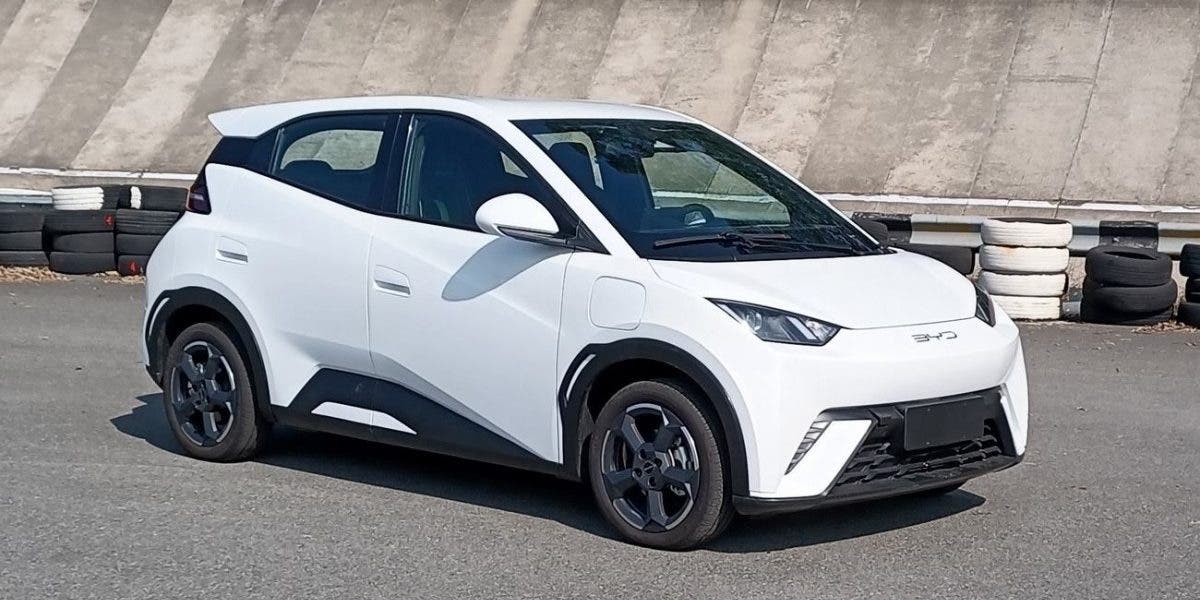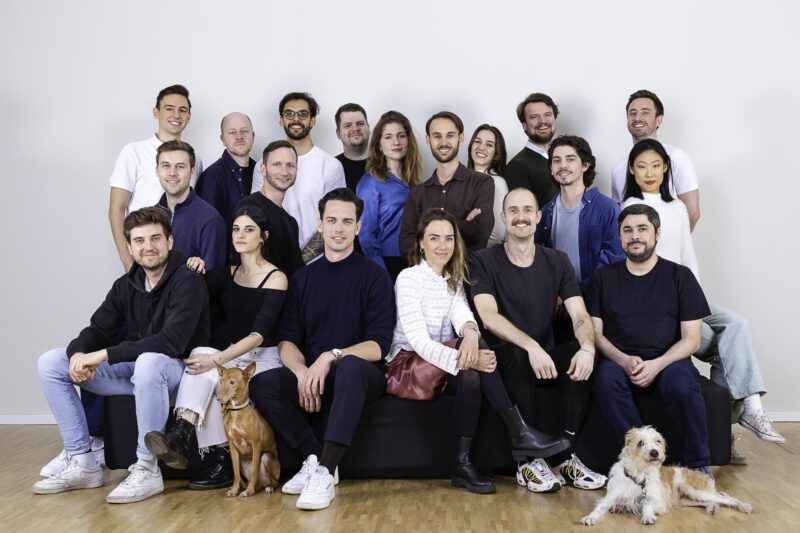
Sign up for daily news updates from CleanTechnica on email. Or follow us on Google News!
A few days ago, executive editor Zachary Shahan wrote about God’s Eye, a new automated driver assistance system (ADAS) from BYD. If you thought Tesla calling its Level 2 ADAS system Full Self Driving promised far more than the system could deliver, what to make of calling a system “God’s Eye?” That seems so self-congratulatory that is makes Full Self Driving seem modest in comparison. So what do we know about God’s Eye? Thanks to regular reader Larry Evans, we know that the latest technology from BYD is offered in three levels, with C being the lowest category.
God’s Eye C utilizes “12 cameras, 5 mm-wave radars, and 12 ultrasonic radars. Those 12 cameras consist of 3 front view cameras, 5 panoramic cameras, and 4 surround view cameras. Five mm-wave radars provide 360 degree non-dead angle perception and the front radar has a detection distance of 300 meters. The accuracy of the 12 ultrasonic radar sensors is 1 cm, while the parking accuracy is 2 cm.” It is now standard equipment on the BYD Seagull, a battery-electric hatchback that sells in China for less than $10,000. God’s Eye C averages over 1000 km of autonomous driving between human interventions, which is already better than what Tesla claims for its FSD system. BYD’s low end system can also valet park without a driver.
God’s Eye B adds LiDAR to the technology package and is Level 3 capable for highway driving. It has been tested on real roads for more than a year and has driven across China with no human intervention in testing using a BYD Denza sedan. This system is included on vehicles priced inline with Teslas. Denza is a premium brand that began as a joint venture between BYD and Mercedes Benz. God’s Eye A has three LiDAR sensors and is Level 3 highway and city capable. With regulatory approval, many observers in China believe that system is Level 4 capable at the present time.
Despite all the hype, Tesla does not currently offer Level 3. It will be very difficult to implement even the current Level 2 “FSD Supervised” system in China because of its heavy reliance on central coding of images, which runs into information privacy laws, to try to overcome a lack of sensors, according to Larry Evans.
The Race Is On

BYD is now China’s top selling auto brand. Bloomberg notes the company is betting the future of autonomous driving is not about exclusivity but accessibility. Founder and chairman Wang Chuanfu said at a launch event last week that such features will be a “must-have” in the next two to three years, “just as a seat belt or an airbag” is now. BYD has used its comprehensive model lineup and aggressive pricing strategies to conquer the market and is not traditionally known for advanced driver assistance tech. Now it is trying to close that gap to catch up with other companies. The company believes the long-running price war must eventually come to an end, and that the companies which survive must prepare for the next wave of competition, which will focus on autonomous driving. BYD is now leveraging its significant production volume, internal integration capabilities, and a late mover advantage that allowed it to learn from the early experiences of competitors like Xpeng and Huawei to catch up.
For instance, Xpeng, which framed itself as a direct competitor to Tesla with a focus on “intelligent” EVs at its founding in 2014, once attempted to separately charge for its advanced driver assistance features to create a steady revenue source. It abandoned that plan in 2022, however, because of low demand from customers. In a change of tack, Xpeng last year unveiled its Mona M03 EV with a starting price of 119,800 yuan ($16,500) and key driving assistance features included in the standard offering, which brought intelligent driving to a more affordable segment.
BYD is learning from those lessons by offering God’s Eye across a broad range of its vehicles. Its vast production volume — sales topped 4.3 million vehicles last year — offers a crucial advantage over smaller rivals in sourcing components and negotiating favorable pricing for sensors, chips, and other critical ADAS components. A vertically integrated supply chain and large R&D team also helps BYD to quickly adapt to changing market demands and integrate innovations without relying too much on external partners.
Most advanced driver assistance systems are designed for over-the-air updates, which makes it possible for manufacturers to constantly improve functionality. Although BYD currently separates God’s Eye into three tiers compatible with three different segments of the new car market, that over-the-air capability could make it possible for the higher end technology to be introduced in more budget-oriented vehicles eventually. The implications could be far-reaching. How can competitors justify premium pricing for ADAS when an entry level BYD offers comparable, or potentially even superior, driving tech? How much can brand value or slick interior design make up for better features, Bloomberg asks?
While God’s Eye has impressed in demonstrations, its performance in the chaotic reality of everyday driving will be the ultimate arbiter of its success. Reliability, user experience, and the ability to seamlessly integrate with existing infrastructure will be crucial. As BYD aggressively expands overseas, it may take longer to introduce such features outside China because of data security and privacy concerns. Meanwhile, Tesla, Xpeng, Geely, and others aren’t going to sit idly by. They’re investing heavily in their own advanced assisted driving tech, or moving to meet other buyer demands. Expect a flurry of innovation and price adjustments in the coming months. The race is on, Bloomberg says.
The Hardware Conundrum
The news from BYD shines a spotlight on Tesla, which has been over-promising and under-delivering on its automated driving technology for a decade. Much of the reason why it is still struggling — although the latest version of FSD is pretty good — is due to mind games from CEO Elon Musk, who cares not one whit what his engineers tell him, but gets fixated on an idea and can’t let it go. Originally, Tesla FSD relied heavily on cameras, then switched its focus to radar, before switching back to cameras again.
All along, Elon has refused to consider using LiDAR. Ostensibly, the issue was cost. Early LiDAR sensors were OMG expensive, with each sensor costing more than a BYD Seagull. Of course, over time the cost of LiDAR has come down dramatically, which is why BYD can offer it on its least expensive cars. But the real reason was because Elon did not want the bumps on the exterior of his cars needed to house LiDAR components. He is famously intransigent in his thinking. The Model X was delayed for two full years because Musk dislikes the sliding doors common on minivans. He insisted on his beloved falcon wing doors instead. They do have a certain wow factor, but have you seen any other manufacturers adopting the idea? What does that tell you?
Are there any Americans who might want ADAS technology on an affordable car? Oh, you betcha. But it won’t happen anytime soon. Americans companies cannot compete with Chinese companies for any number of reasons, and so walls and moats consisting of tariffs and regulations have been created to keep the barbarians at bay. Yet as Robert Frost once observed,
Before I built a wall I’d ask to know
What I was walling in or walling out,
And to whom I was like to give offense.
Some critical thinking along the lines suggested by Frost could be quite useful today.
Chip in a few dollars a month to help support independent cleantech coverage that helps to accelerate the cleantech revolution!
Have a tip for CleanTechnica? Want to advertise? Want to suggest a guest for our CleanTech Talk podcast? Contact us here.
Sign up for our daily newsletter for 15 new cleantech stories a day. Or sign up for our weekly one if daily is too frequent.
CleanTechnica uses affiliate links. See our policy here.
CleanTechnica’s Comment Policy




